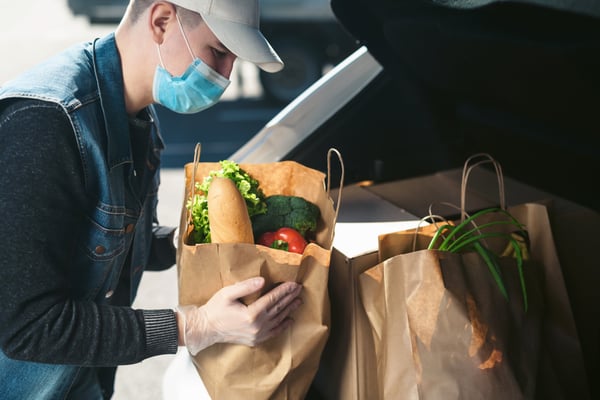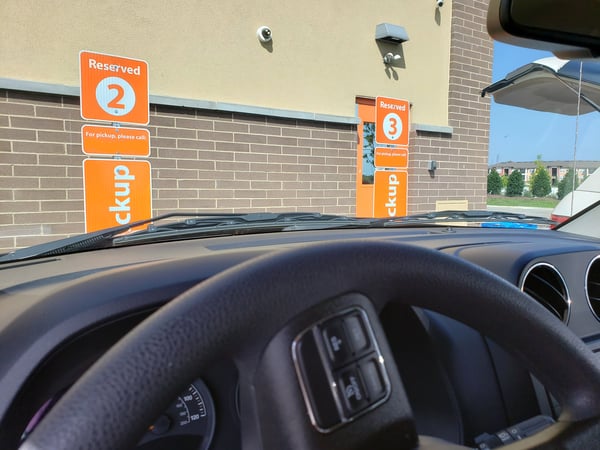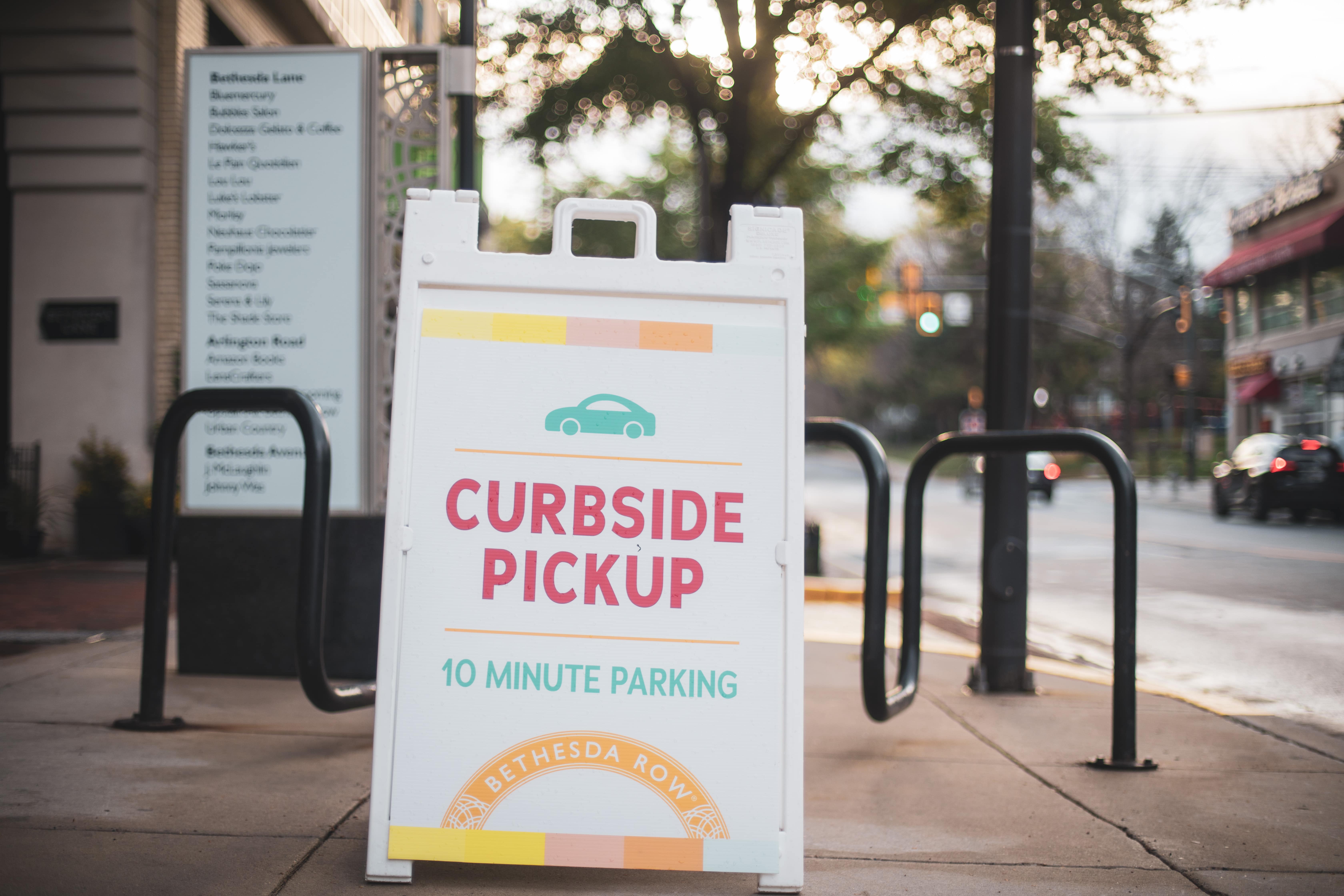Thank you for your interest in our Curbside 101 Primer! In this primer, you will explore:
Curbside is a service where a customer can order ahead and have their goods brought to their car by a store associate. While there are many ways to add curbside pickup services to a business, it always starts with a customer order. Offering a digital ordering solution, such as through a mobile app or website, provides the most seamless customer experience.
Once pickup orders are captured, a process is kicked off within a business to finalize the sale. These steps include: preparing the order, tracking the customer’s arrival, bringing the order to the designated pickup area and the correct car, verifying customer identity and closing the sale. Many retailers also offer an in store pickup for guests who prefer that option.
When orders are multiplied by the number of clients a business must serve within a given time period, the complexity of executing this process can become a logistical challenge. That’s where curbside technology and experts in digital transformation and innovation can help.
Why is Curbside Pickup Important?
Curbside pick up usage is on the rise. Customers who had never previously considered this service are now using it as their primary way to get groceries, takeout, and other goods they used to purchase from a brick and mortar store. Recent data suggests curbside has surged 208% since last year. In addition, Mobiquity research indicates that about 50% of the overall US population believe they will continue using new methods to shop for food, including curbside pick up, in the future. 1
Curbside is an appealing option for many people. But some populations will benefit and use it more than others, including:
The biggest reason to consider adding curbside to your playbook is to improve customer experience which will drive loyalty to your business. Curbside pickup has been steadily increasing in recent years, meaning that customers expect curbside as an option at many, if not most, retailers. In January 2018, there were 2,451 nationwide click-and-collect locations for some of the world’s most well-known retailers. By December, that number had grown to 5,800. Why? Customers love it. And while implementing a curbside pickup experience can be a great short term solution to give customers a safer, touchless way to shop, for many companies, it can have a long-term, positive impact on business. That’s because, when curbside is done right, it’s a win-win for you and your guests!
There are many drivers as to why customers love curbside that coincide with business benefits, such as:
What Kinds of Businesses Should Consider Curbside Pickup Technology?
Full service and quick-service restaurants
In the past, restaurant guests who didn’t have the time or desire to physically go inside a restaurant had two options: drive thru or delivery. While guests have grown accustomed to these options, both have drawbacks that a curbside pickup order can alleviate.
A drive-thru lane requires extra space and infrastructure, meaning it may not be an option for all restaurants. Not to mention the fact that a drive thru can limit the number of customers you can serve at one time. Curbside can offer a convenient and touchless solution for businesses without the ability to add a drive thru. It can also be a secondary way to serve guests during busy time periods for restaurants with a drive thru option.
To offer delivery, restaurants are required to either maintain a fleet of vehicles and pay drivers or partner with a third-party who may inflate their prices to customers, take a cut of the profits for each order, and whose customer service practices are outside the control of the restaurant. Curbside offers guests a convenient pick up option without the need for the complexity of a delivery option.
While restaurants seem the most obvious benefactors of curbside, there are other businesses that see great results when offering curbside to their customers.
Grocery store chains
Curbside is a great solution for consumers that need groceries. Whether you’re busy and don’t have time, or simply don’t want to leave the house and spend an hour doing what many consider a chore, the convenience that placing pickup orders offers is a reprieve that most customers can’t say no to. In addition, mass market retailers such as Costco, Walmart, and others that benefit from selling both groceries and other home goods can give their shoppers an advantage with curbside – by removing the burden of trying to run errands quickly, which can be difficult when navigating a big store.

Convenience stores
Curbside has tremendous value for convenience store chains where the added bonus of efficiency can drive customer loyalty. With fuel activation and digital payment available inside a mobile app where consumers can simultaneously place their lunch order, convenience stores can make the amount of customer effort needed to engage with them very low, for a very high return. Getting customers back to their day faster reduces the amount of stops they have to make while keeping them safe – and nothing says convenience better than this!
Other retailers
Many other retailers can also benefit from adding curbside to their playbook, including:
How to Implement Curbside Delivery Technology
Implementing curbside technology takes a fully-thought out strategy. You need to understand your potential pitfalls and form a plan so you can roll out your new service successfully. This process involves building out a mobile app, website, or both, and then establishing how you will physically accommodate a program in your parking lot, train staff, and design a procedure for handling pickups, identity verification, and payment.
Building a Mobile Application
When building a curbside delivery app, remember that it will be an investment. While you may want to release something quickly to meet new demand, your app should continue to serve you as your business grows and new opportunities arise.
The two most basic functionalities the app needs is ordering and inventory. The app should provide a streamlined solution that allows customers to select the items to purchase - a function that can look very different depending on your business model. A deli might give customers the option to build their sandwich from bun-to-bun or offer a selection of menu options. A retail store, on the other hand, needs the ability to show customers what is in stock so that they can receive their full order.
To streamline the experience and avoid face-to-face contact during peak virus seasons, your digital platform should accept credit cards and other forms of digital payment so that customers don't have to wait for a card reader or sign a physical receipt. You should also consider how your loyalty program will integrate with this new capability since customers expect to have the same experience in store, online, and via curbside mobile ordering.
Designating Curbside Parking and Staff
Implementing curbside pickup also requires many logistical considerations. You'll need to set up an area in your parking lot where customers can receive their orders. If you don't own your parking lot, you'll need to coordinate this with surrounding businesses and the lot owner. You'll also need signage to show curbside customers where to park. Directions for where to go for pickup should be clearly laid out in the mobile app.

If you have many locations, you'll have to consider how each location differs. Some of your stores might have easily accessible parking lots while others do not. As you examine how to implement curbside pickup, working with experts who have implemented these types of programs will help you determine how to make curbside work for your business.
You'll also need to consider how your staff factors in. Depending on your needs, you may decide to have dedicated curbside staff. A retail store will need team members in charge of communicating and organizing incoming orders and others ready to distribute them. A restaurant may need employees to handle preparing and packaging an influx of curbside orders, and others prepared to take them out to people's cars.
Your team will need new training to handle curbside deliveries and should be properly equipped for success. This can include things like disposable gloves and face masks or seasonal gear such as branded jackets for winter, t-shirts for summer, or umbrellas to keep themselves and customers' orders dry on rainy days.
Verifying Identity
In order to provide contactless service, you should have a safe and secure way to identify cars and customers’ identity. If you’re hoping to maintain sales of regulated goods, such as alcohol or cigarettes, you'll also need confirmation of a customer's age in order to finalize a sale.
Luckily, technology has made contactless identity verification possible through seamless integration with your curbside mobile app. Customers can send a photo of their drivers' license or other documents and a selfie to help your employees identify them and verify the information. Learn more about Electronic Know Your Customer (eKYC) technology now.
The Final Step: Testing and Refining Your Process
Before you launch curbside pickup, you'll need to make sure every detail is right. Items should be packed to avoid accidents like spills and breakage. You also need to make sure your delivery process works — staff can pick and deliver on-time, the app is bug-free, and customers know how to use your services.
As you test your new service, you’ll discover areas that may need refinement, such as training and change management, or adding new steps to the delivery process like double-checking orders before they go out to customers. Whatever you need, adding a curbside pickup program means taking time to test so you can have a successful rollout.
Challenges and Pitfalls to Offering Curbside Pickup
Many businesses are implementing curbside pickup with sudden urgency. While curbside can lead to long term success, it's crucial that it’s executed thoughtfully. To do so, it’s important to consider the challenges you might run into:
While these are some commonly overlooked challenges, we also find that there are common misconceptions about developing a curbside program. Learn more about the five myths of launching curbside pickup.
Building a Custom Program vs. Using a Third Party Product
You may be wondering if third-party delivery or curbside apps are better suited for your business. In some cases, paying out fees to these third-party apps can be worth it to get contactless service up and running quickly. Still, there are many benefits to having a curbside pickup app that you cannot get from a third party. The following list showcases key benefits associated with custom curbside programs:
Your Partner for Creating a Curbside Program
There are many important factors to consider when launching a curbside program. To ensure that your program is launched successfully, think about working with a partner who has experience analyzing end-to-end operations to best integrate curbside into your unique business model.
Why Work with Mobiquity?
Mobiquity has a wealth of experience helping customers design the right program for their operational needs and we’re ready to help you get started. We have worked with restaurants, convenience stores, grocery stores, and other retail chains to kickstart their curbside journey.
We can start with a simple strategy conversation and then determine next steps based on your specific needs. Contact us to talk with Mobiquity about your curbside goals.
Resources
Give us your information below to start the conversation.
